When it comes to caring for pet turtles and tortoises, proper nutrition plays a vital role in their overall health and longevity. While a balanced diet forms the foundation of their nutritional needs, occasional treats can provide enrichment and supplementary nutrients. Unlike mammals, these reptiles have specific dietary requirements that vary significantly between species. Whether you have a semi-aquatic turtle or a land-dwelling tortoise, understanding which treats are both safe and beneficial can help strengthen your bond with your shelled companion while supporting their health. This guide explores various healthy treat options, feeding guidelines, and important considerations to ensure your chelonian friend thrives under your care.
Understanding Turtle and Tortoise Dietary Basics
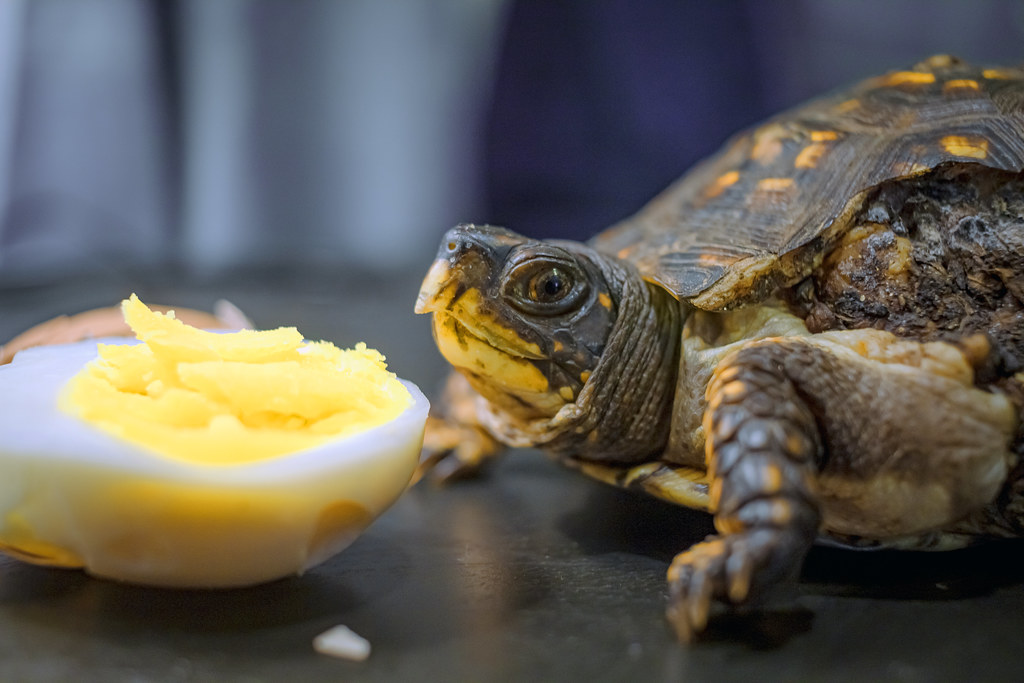
Before diving into treats, it’s essential to understand the fundamental dietary differences between turtles and tortoises. Aquatic and semi-aquatic turtles typically require a protein-rich diet, especially when young, gradually shifting toward more plant matter as they mature. Land tortoises, conversely, are primarily herbivores, with their diet consisting mostly of grasses, weeds, leafy greens, and vegetables.
These basic differences significantly influence which treats are appropriate for your specific pet. Protein-rich treats that might benefit a slider turtle could potentially harm a Russian tortoise’s kidneys and liver. Always research your specific species’ needs, as improper nutrition is one of the leading causes of health problems in captive chelonians.
Leafy Green Treats for Herbivorous Species
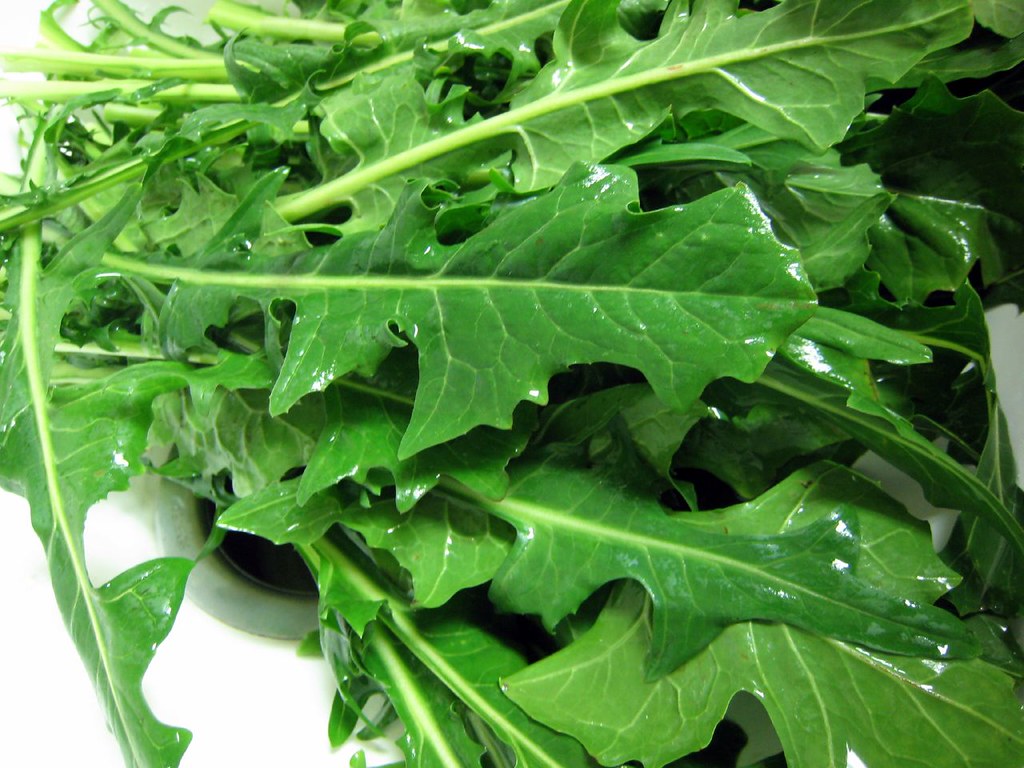
Dark, leafy greens make excellent treats for herbivorous tortoises and adult aquatic turtles. Dandelion greens stand out as a nutritional powerhouse, offering high calcium and low phosphorus—an important ratio for shell health. Mustard greens, collard greens, turnip greens, and escarole can be offered occasionally to add variety and different nutrient profiles to their diet.
Herbs like basil, cilantro, and parsley can be sprinkled sparingly as aromatic treats that many tortoises particularly enjoy. For added enrichment, consider hanging these greens slightly above your pet’s reach, encouraging natural stretching and foraging behaviors that mimic their activities in the wild.
Colorful Vegetable Options
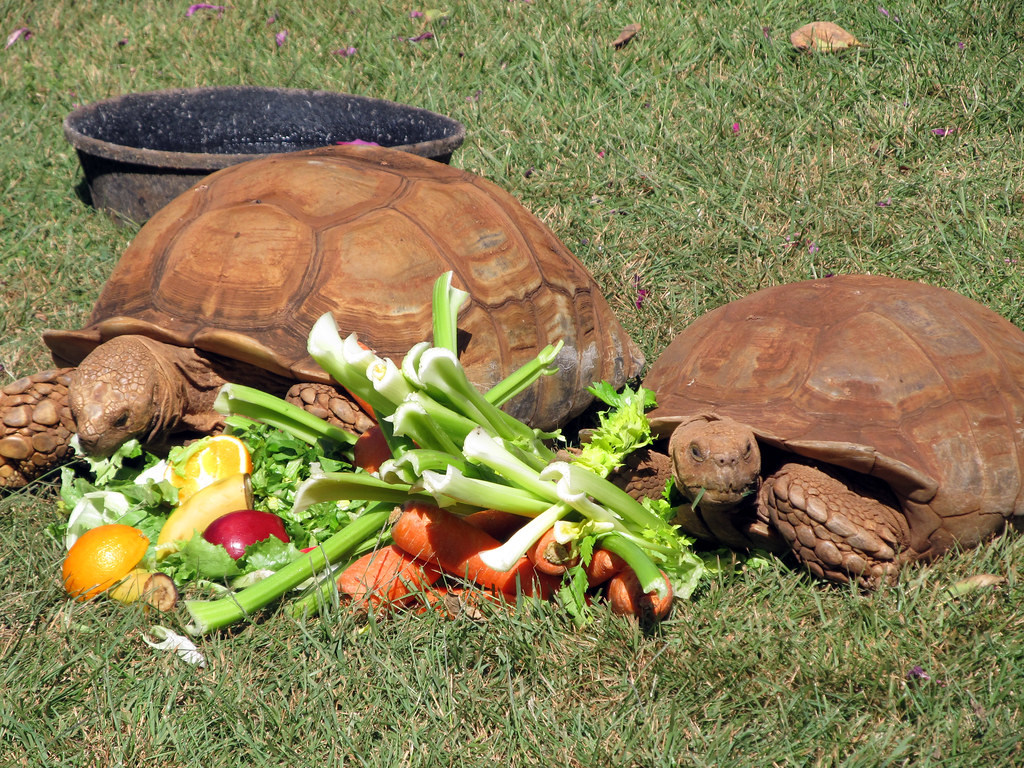
Vegetables adding vibrant color to your chelonian’s diet often contain beneficial antioxidants and varied nutrients. Bell peppers (particularly red ones) provide vitamin C and can be cut into small, manageable pieces for both turtles and tortoises. Grated carrots and squash offer beta-carotene and can be particularly appealing to many species due to their bright color and sweet taste.
Pumpkin, when offered raw in small amounts, provides fiber and can help with digestive health. Remember that starchy vegetables like corn should be limited, while vegetables from the nightshade family (like eggplant and potatoes) should be avoided entirely as they contain solanine, which can be toxic to reptiles.
Fruit Treats: Benefits and Limitations
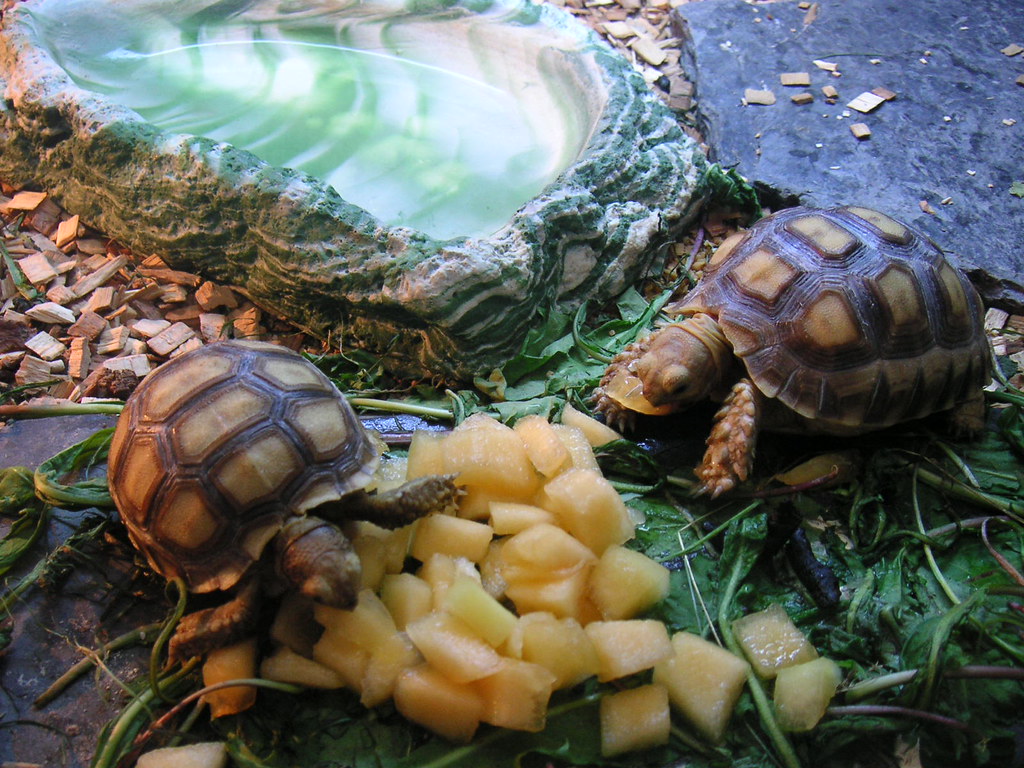
Fruits can serve as occasional sweet treats for many turtle and tortoise species, but their high sugar content necessitates moderation. Berries such as strawberries, blueberries, and raspberries can be offered in small pieces as rare treats, providing antioxidants and vitamin C. Melon and papaya chunks can be hydrating treats during warmer months or for species from more tropical environments.
For desert tortoise species like the Russian or Sulcata tortoise, fruit should be limited to very rare occasions as their digestive systems aren’t adapted to process high sugar contents. When offering fruit, always remove seeds and pits, which can contain cyanide compounds harmful to reptiles.
Protein Treats for Aquatic Turtles
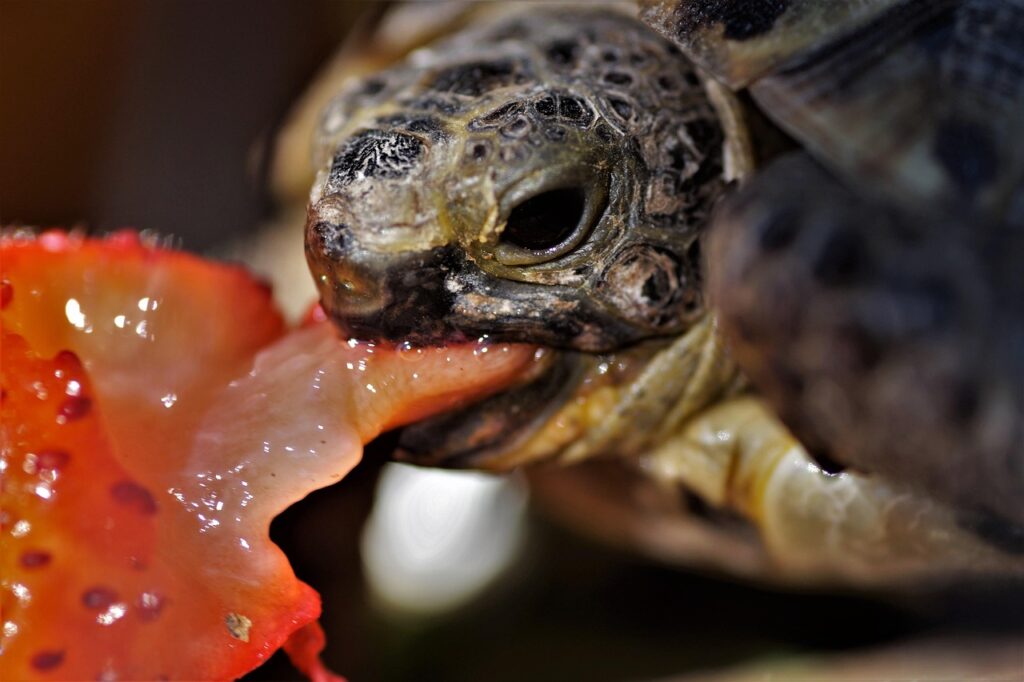
Aquatic and semi-aquatic turtles benefit from protein-rich treats that supplement their omnivorous diet. Small pieces of cooked, unseasoned fish like tilapia or salmon provide omega fatty acids that support shell and skin health. Live feeder fish should be used sparingly and sourced carefully to avoid parasites and thiaminase, an enzyme that can lead to vitamin B1 deficiency.
Earthworms make excellent protein treats and encourage natural hunting behaviors when offered live. Freeze-dried shrimp or krill can be convenient protein options that many aquatic turtles eagerly accept, though they should be offered in moderation due to their concentrated nature.
Commercial Turtle and Tortoise Treats
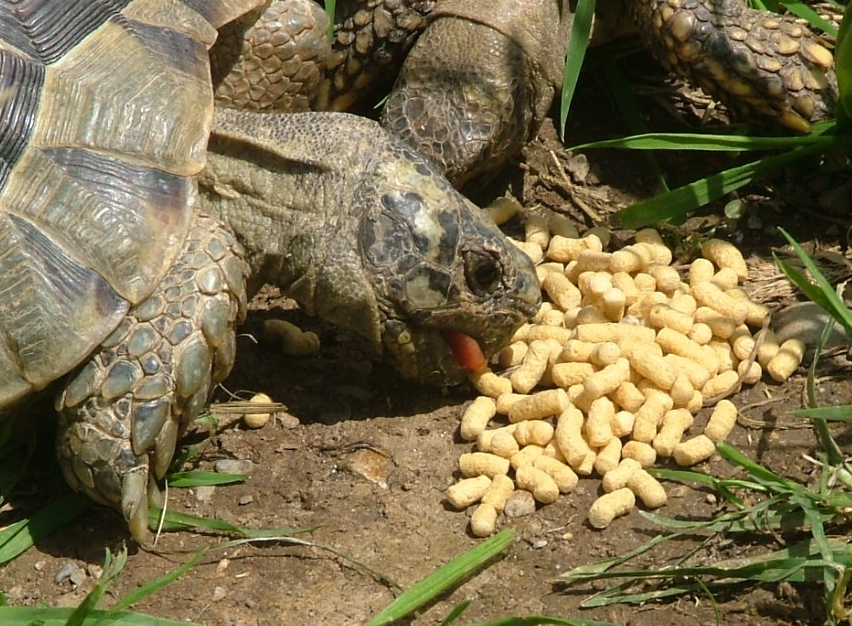
The pet market offers various commercial treats formulated specifically for turtles and tortoises, though their quality varies significantly. Look for treats without artificial colors, preservatives, or added sugars, which provide no nutritional benefit and may cause harm over time.
Some reputable brands offer calcium-enriched cuttlebone pieces or dried vegetable medleys specifically designed for chelonian dietary needs. Freeze-dried mealworms or crickets can be purchased as convenient, shelf-stable protein treats for omnivorous species.
Remember that commercial treats, regardless of quality, should constitute no more than 10% of your pet’s overall diet and should supplement rather than replace a varied, species-appropriate feeding routine.
Calcium-Rich Treat Supplements
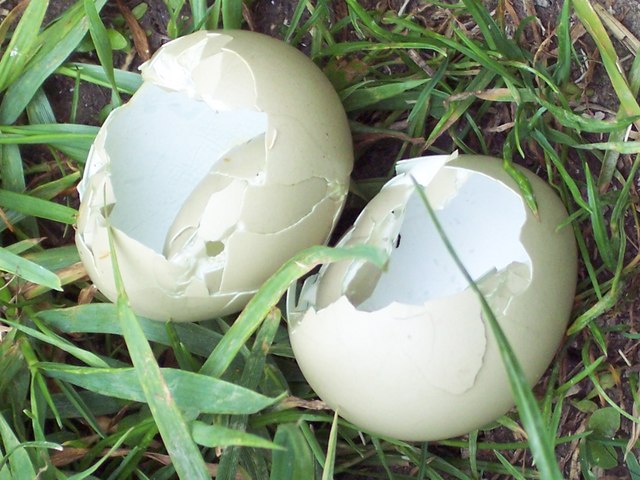
Calcium plays a crucial role in shell development and overall skeletal health in turtles and tortoises. Cuttlebone, commonly sold for birds, provides an excellent calcium source that many chelonians will nibble on voluntarily. Crushed eggshells (baked at 350°F for 10 minutes to kill potential pathogens) can be sprinkled over food as a calcium-rich treat.
For tortoises especially, calcium-rich weeds like chickweed, clover, and plantain make excellent foraged treats if collected from pesticide-free areas. When offering calcium supplements, ensure proper UVB lighting is available, as vitamin D3 production is essential for calcium absorption and metabolism in reptiles.
Flowers as Exotic Treats
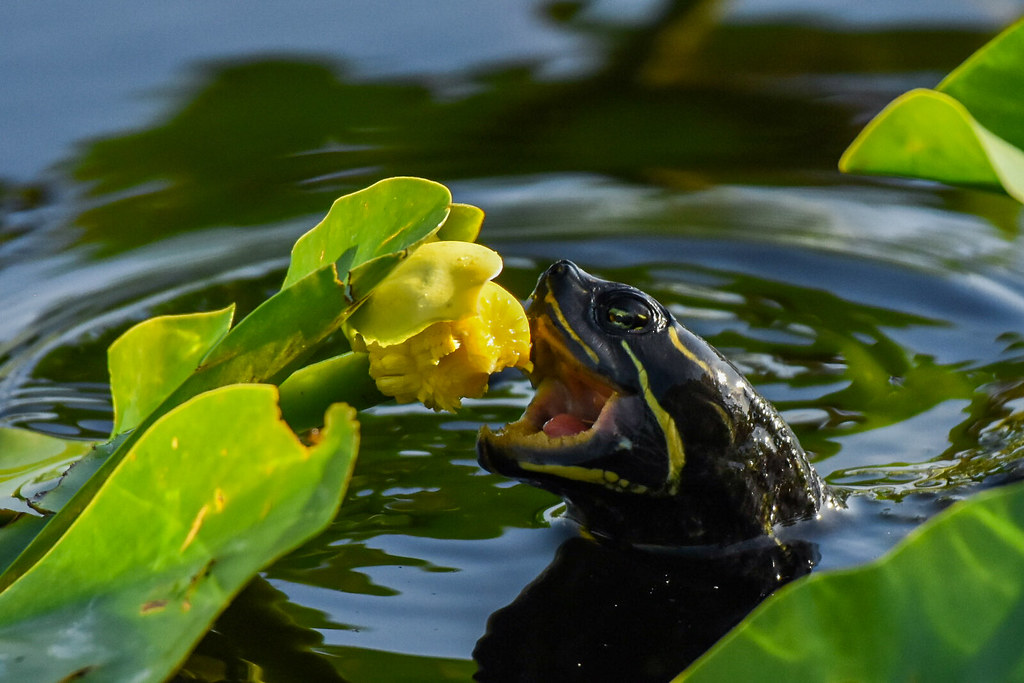
Many tortoise species naturally consume flowers in the wild, making them both enriching and nutritious treat options. Hibiscus flowers, both the petals and the entire bloom, are eagerly accepted by many tortoise species and provide variety to their diet. Dandelion flowers, roses (ensuring they’re free from pesticides), pansies, and nasturtiums are all safe options that add color and different textures to their feeding experience.
Flowers from the squash family, including zucchini and pumpkin blossoms, are particularly nutritious options when available. Always research each flower type before offering, as certain common garden flowers like lilies, daffodils, and azaleas are toxic to reptiles.
Homemade Treat Ideas
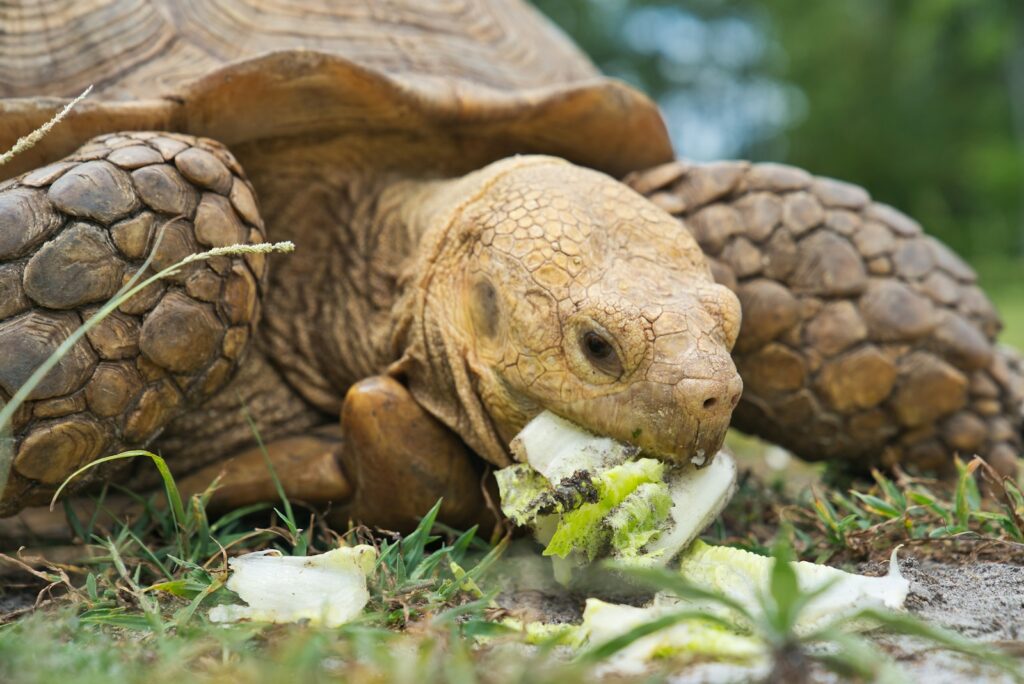
Creating homemade treats allows complete control over ingredients while providing enrichment for your shelled companion. A “turtle salad” can be made by finely chopping various safe greens, vegetables, and herbs, then forming them into a ball for aquatic turtles to nibble on at the water’s surface.
For tortoises, treats can be created by hollowing out half a bell pepper and filling it with chopped greens and edible flowers, creating a “tortoise taco” that encourages natural foraging. Frozen treats made from pureed vegetables diluted with water can provide cooling enrichment during hot weather. Avoid adding any seasonings, oils, or dressings, as these additives can cause digestive upset and provide no nutritional benefit.
Treats to Absolutely Avoid
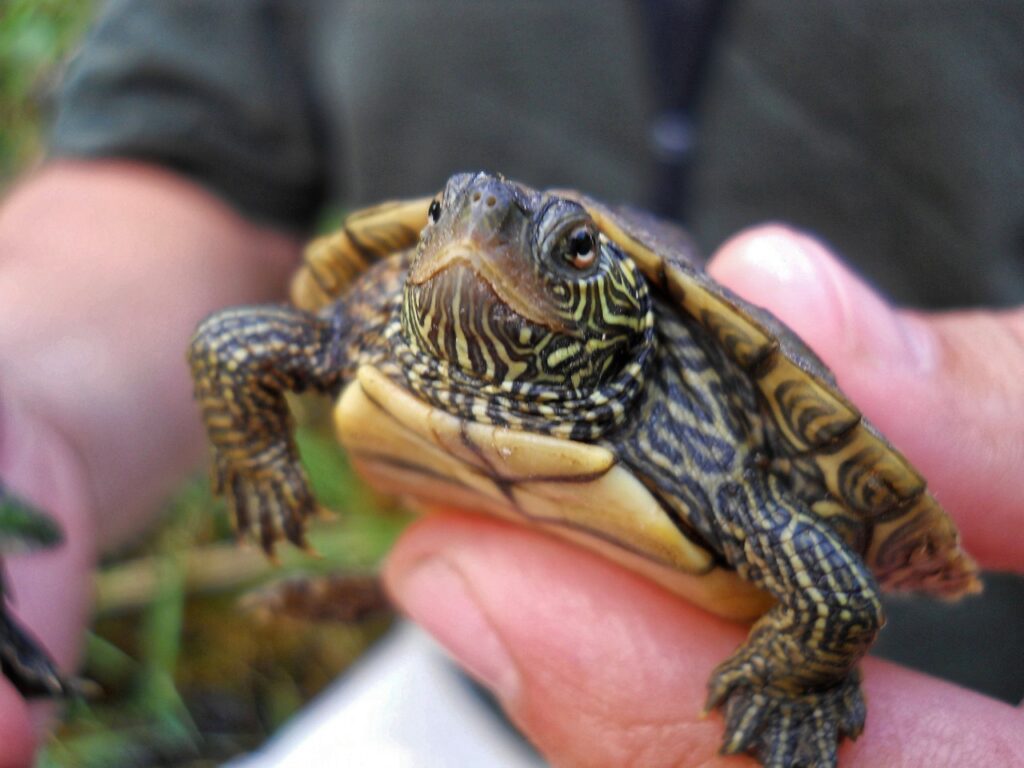
Several common foods can be harmful or even fatal to turtles and tortoises and should never be offered as treats. Avocados contain persin, a fungicidal toxin that can cause heart damage and respiratory distress in reptiles. Dairy products should be avoided entirely as chelonians lack the enzymes to properly digest lactose.
Raw meat poses salmonella risks and nutritional imbalances, while processed human foods containing salt, sugar, and preservatives can cause kidney damage and obesity. Rhubarb and spinach, while seemingly healthy, contain oxalates that bind calcium and can contribute to metabolic bone disease when fed regularly.
Proper Treat Portioning and Frequency
Treats, no matter how nutritious, should be offered in moderation to maintain balanced nutrition for your turtle or tortoise. A good rule of thumb is to keep treats to less than 10% of your pet’s overall diet, with the remaining 90% consisting of their species-appropriate staple foods. For most chelonians, treats are best offered 1-2 times weekly rather than daily to prevent nutritional imbalances. Portion size should be scaled to your pet’s size—a bite-sized piece for smaller species like mud turtles or Russian tortoises, while larger species may handle slightly bigger portions. Observe your pet after introducing any new treat to ensure it doesn’t cause digestive upset, which might manifest as changes in stool consistency or reduced appetite.
Seasonal Considerations for Treats
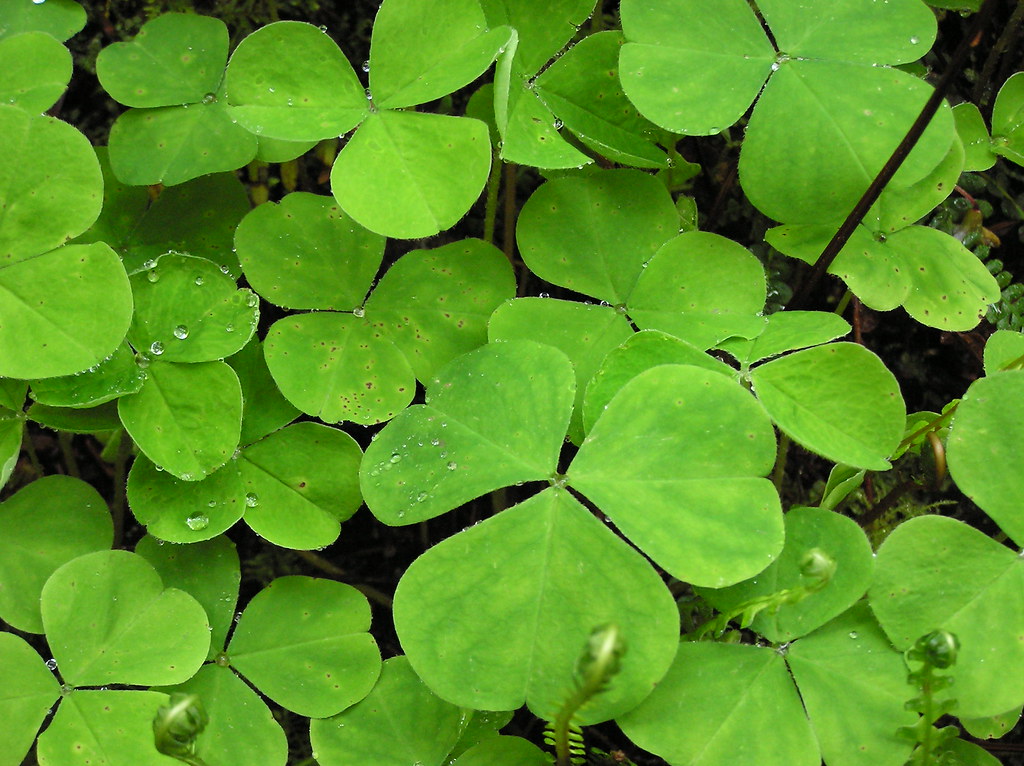
Aligning treats with seasonal availability can mimic natural feeding patterns and provide fresher, more nutritious options. Spring dandelions and clovers make excellent seasonal treats for tortoises as they emerge from winter brumation and need nutritional boosts. Summer offers opportunities for hydrating treats like watermelon pieces (seeds removed) during the hottest months when hydration is crucial.
Fall harvests provide pumpkin and squash varieties that many species enjoy. For turtles and tortoises that brumate (hibernate) during winter, reduce treats as temperatures drop and their metabolism slows, focusing instead on maintaining consistent core nutrition before and after this period.
Using Treats for Enrichment and Bonding
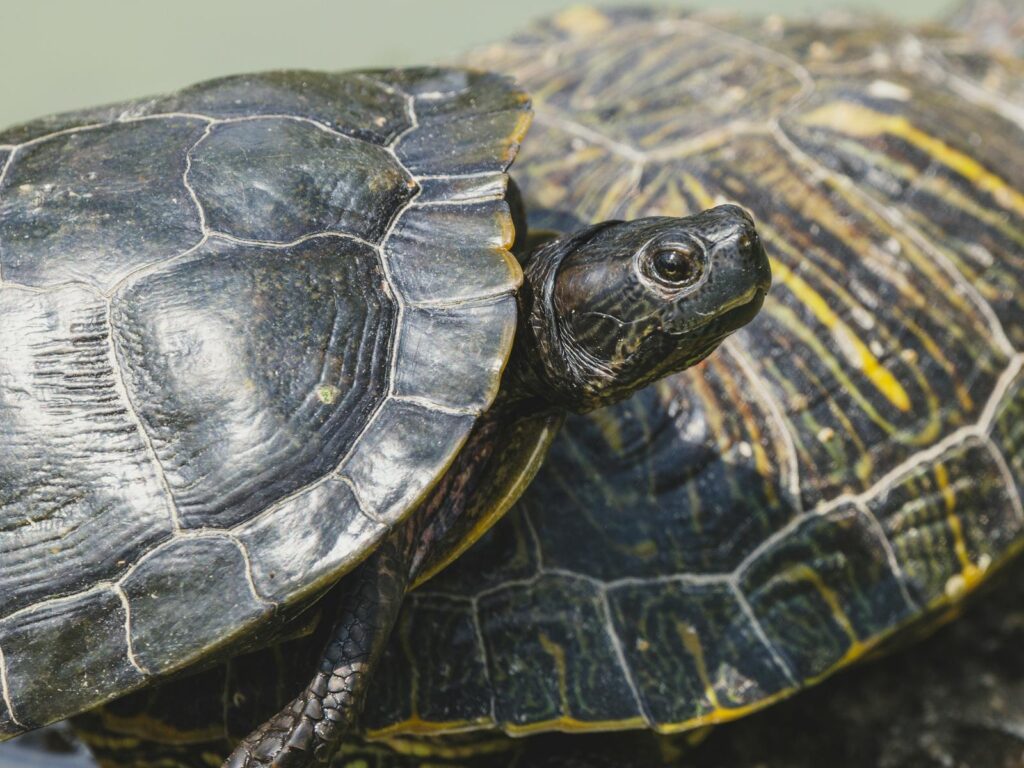
Treats serve purposes beyond nutrition, offering valuable opportunities for enrichment and strengthening the human-reptile bond. Placing treats in different locations encourages physical activity as your pet searches and navigates to reach them. Some owners use favorite treats to hand-train their chelonians, helping them associate human presence with positive experiences.
For aquatic turtles, floating treats can encourage swimming and diving behaviors that maintain muscle tone. Remember that while turtles and tortoises may seem eager for treats, their enthusiasm doesn’t indicate the treat’s nutritional appropriateness—it remains the owner’s responsibility to make healthy choices for these reptiles that would happily overindulge if permitted.
In conclusion, healthy treats can be a wonderful addition to your turtle or tortoise’s care routine when offered appropriately. By understanding your specific species’ dietary needs, choosing nutritious options, and maintaining proper moderation, treats can enhance your pet’s physical health and mental stimulation.
Remember that what makes a good treat varies significantly between aquatic turtles and land tortoises, with serious health consequences possible from inappropriate feeding. By following the guidelines outlined in this article and consulting with a reptile veterinarian about your specific pet’s needs, you can ensure your shelled companion enjoys a varied, enriching diet that contributes to a long, healthy life in your care.


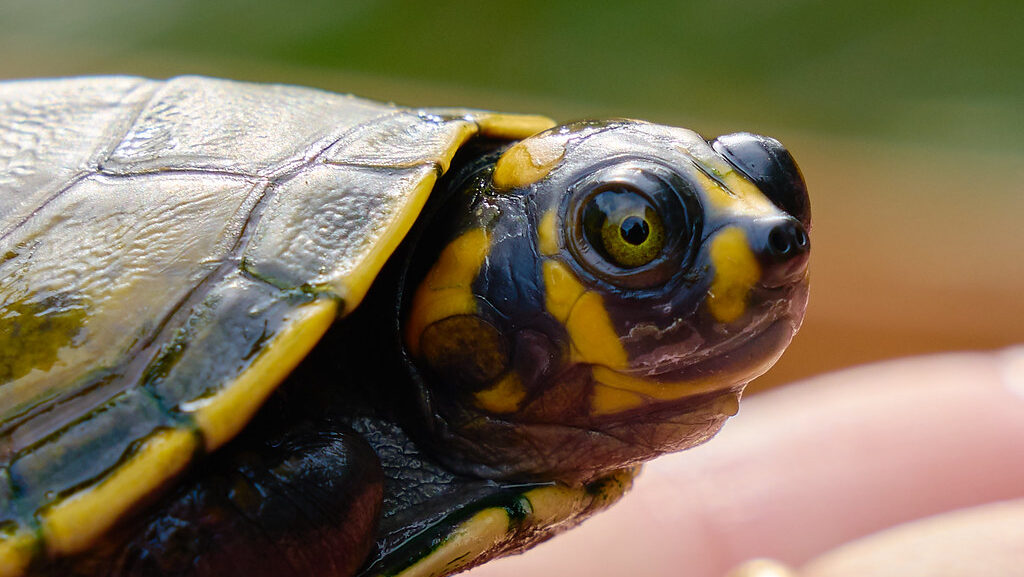
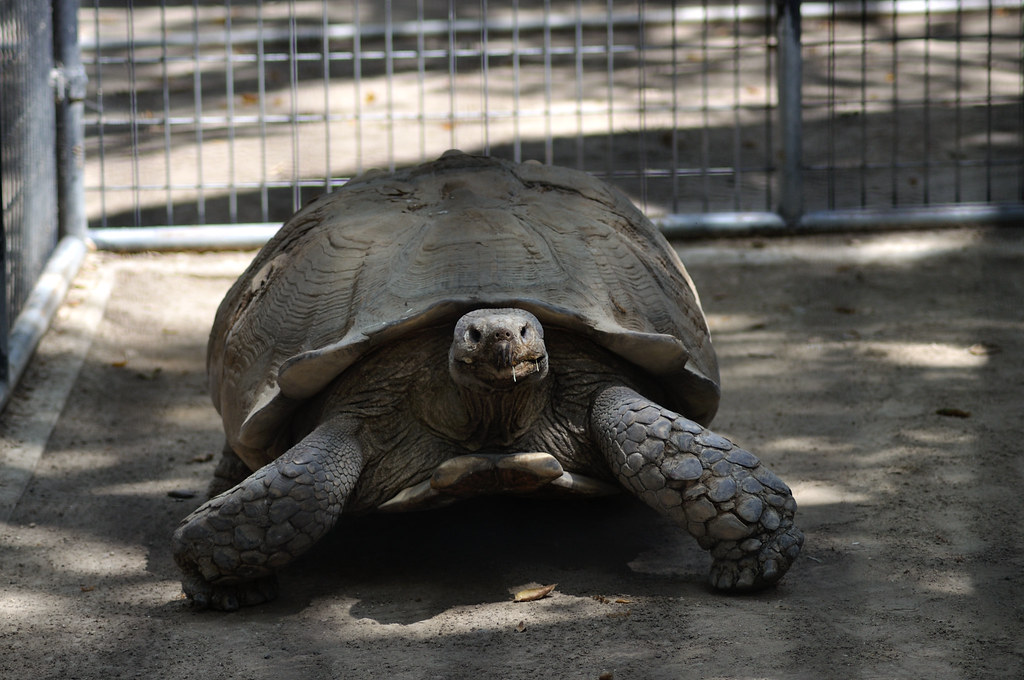
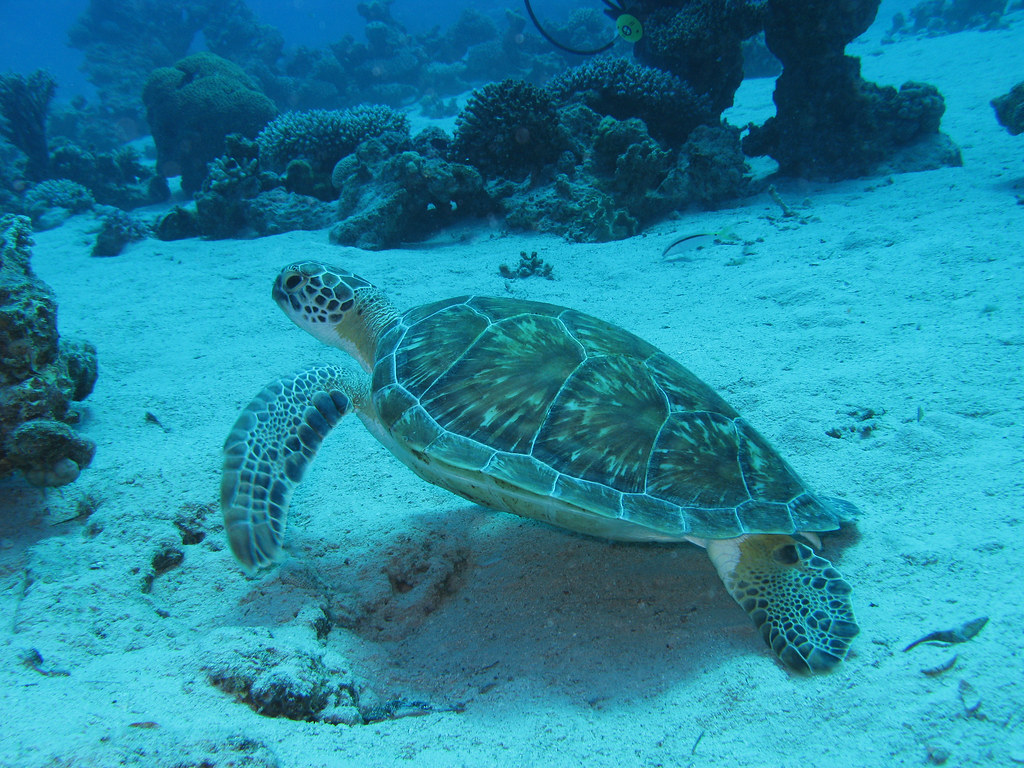
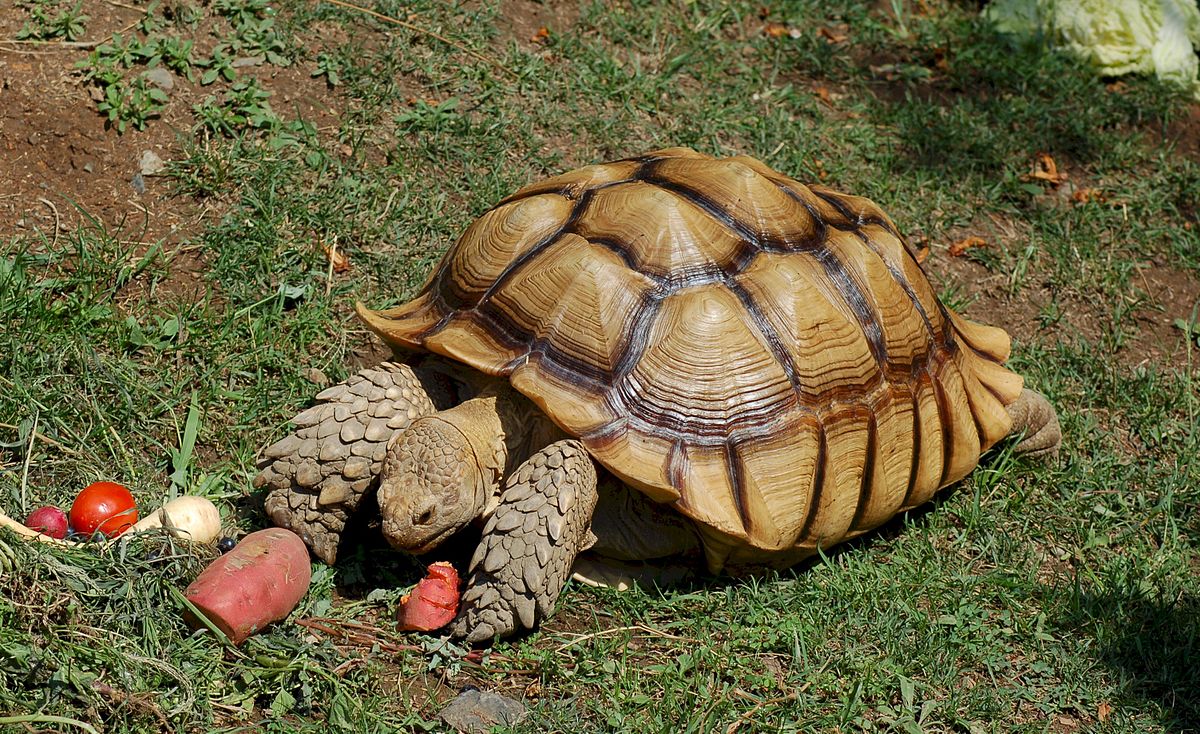


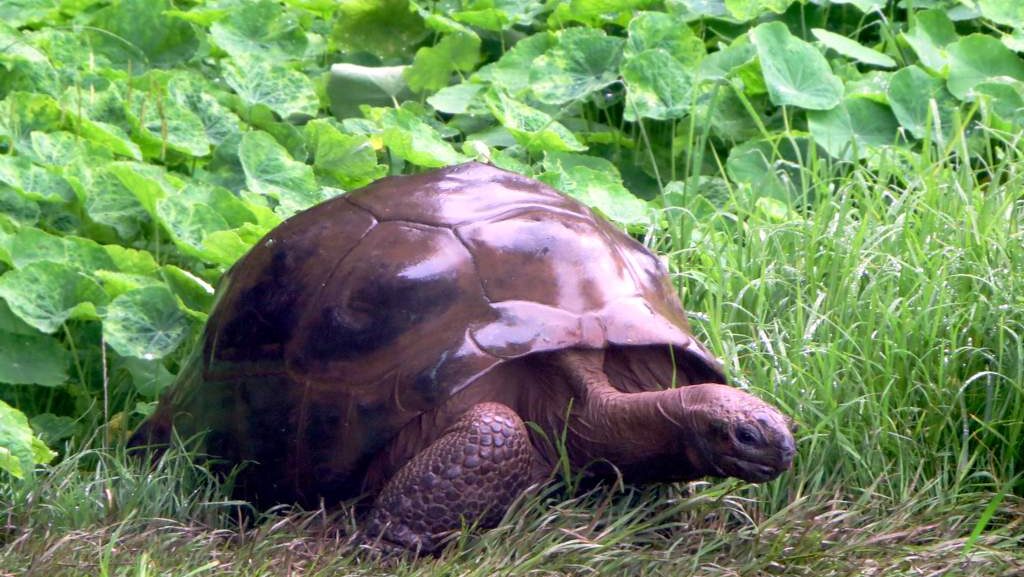

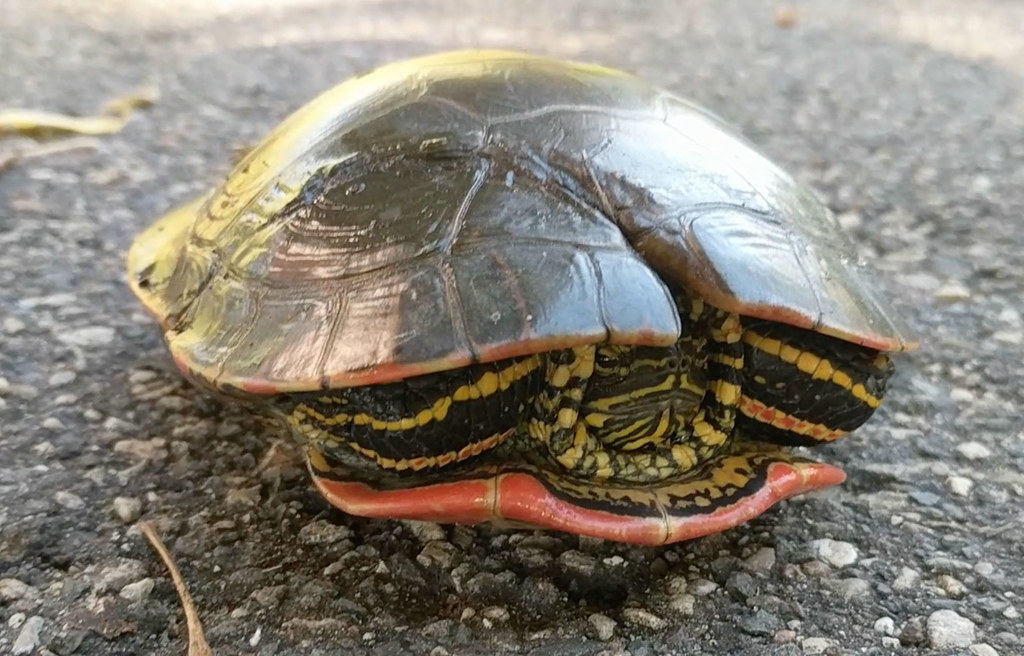




Leave a Reply